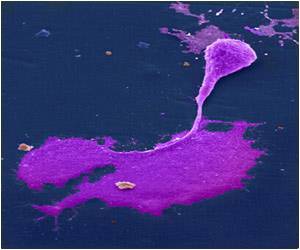Highlights
- Biologically inactive old cells can be rejuvenated to slow down aging factors
- Splicing genes are an essential class of genes that ensure that cells perform their full range of functions
- These splicing genes get switched off progressively as we age
- Chemicals such as resveratrol analogs can switch these splicing factors back on, making them look physically younger and even divide
The researchers applied compounds called resveratrol analogs, chemicals based on a substance naturally found in red wine, dark chocolate, red grapes, and blueberries, to cells in culture.
The chemicals caused splicing factors, which are progressively switched off as we age to be switched back on. Within hours, the cells looked younger and started to rejuvenate, behaving like young cells and dividing.
The discovery has the potential to lead to therapies, which could help people age better, without experiencing some of the degenerative effects of getting old. Most people by the age of 85 have experienced some kind of chronic illness, and as people get older, they are more prone to stroke, heart disease, and cancer.
Professor Harries said: "This is a first step in trying to make people live normal life spans, but with health for their entire life. Our data suggest that using chemicals to switch back to the major class of genes that are switched off as we age might provide a means to restore function to old cells."
"When I saw some of the cells in the culture dish rejuvenating I couldn't believe it. These old cells were looking like young cells. It was like magic," she said. "I repeated the experiments several times and in each case, the cells rejuvenated. I am very excited by the implications and potential for this research."
Splicing factors are crucial in ensuring that genes can perform their full range of functions. One gene can send out several messages to the body to perform a function - such as the decision whether or not to grow new blood vessels - and the splicing factors make the decision about which message to make.
As people age, the splicing factors tend to work less efficiently or not at all, restricting the ability of cells to respond to challenges in their environment. Senescent cells, which can be found in most organs from older people, also have fewer splicing factors.
Professor Harries added:"This demonstrates that when you treat old cells with molecules that restore the levels of the splicing factors, the cells regain some features of youth. They are able to grow, and their telomeres - the caps on the ends of the chromosomes that shorten as we age - are now longer, as they are in young cells. Far more research is needed now to establish the true potential for these sort of approaches to address the degenerative effects of aging. "
Professor Richard Faragher of the University of Brighton, will today argue for more research into the degenerative effects of aging in a debate into whether science should be used to extend people's lifespans.
"At a time when our capacity to translate new knowledge about the mechanisms of aging into medicines and lifestyle advice is limited only by a chronic shortage of funds, older people are ill-served by self-indulgent science fiction. They need practical action to restore their health, and they needed it yesterday," he said.
Professor Faragher added: "Our discovery of cell rejuvenation using these simple compounds shows the enormous potential of aging research to improve the lives of older people"
Reference
- Eva Latorre, Vishal C. Birar, Angela N. Sheerin, J. Charles C. Jeynes, Amy Hooper, Helen R. Dawe, David Melzer, Lynne S. Cox, Richard G. A. Faragher, Elizabeth L. OstlerEmail author and Lorna W. Harries. Small molecule modulation of splicing factor expression is associated with rescue from cellular senescence, BMC Cell Biology (2017).https://doi.org/10.1186/s12860-017-0147-7
Source-Eurekalert











